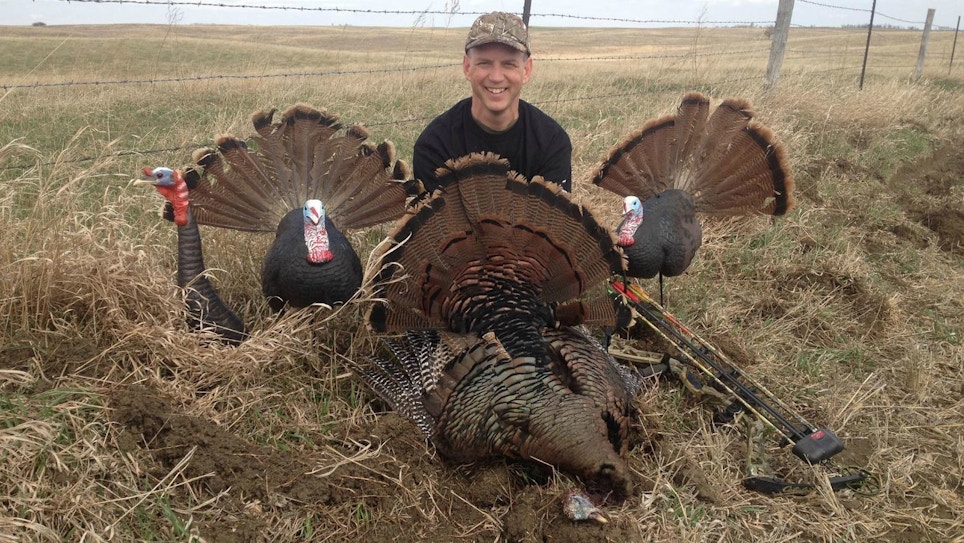I have good friends — great bowhunters — who regularly arrow wild turkeys with body shots, but I changed my mind about a decade ago and now use head/neck shots whenever possible.
Note: I said “whenever possible.” My quiver contains arrows and broadheads designed for either body shots or head/neck shots, and depending on the situation, I’ll grab the one I need for the job. Specifically, if I’m hunting from a pop-up blind over decoys (placed at 5-7 yards), and I expect birds to walk or strut in to engage my decoys, then I’ll load up with a head/neck broadhead threaded on the appropriate arrow.
However, if I’m spot-and-stalk hunting, and shots are likely to be 15-20 yards, then I’ll go with a mechanical broadhead with a large cutting diameter threaded onto the same carbon arrow I’d choose for whitetails.
I prefer shooting wild turkeys in the head/neck because it takes the “where’s the heart/lungs?” question off the table. If I can see a turkey’s head and neck, then I know exactly where to aim. I like to keep things simple, and nothing is simpler than putting a fiber-optic pin on the base of a head-on gobbler’s neck. If he’s broadside, I aim for his cheek. Back of the head works, too. Draw, aim, release. No guessing. I love it.
No one likes to admit they’ve lost arrow-hit game, and this is the reason why I use head/neck broadheads whenever possible for turkeys. I have great success with the 125-grain Magnus Bullhead. I’ve also heard good reports from hunters who have used the 200-grain Turkey D-Cap from Solid Broadheads. Picture me knocking on my wooden desk: I’ve never lost a turkey I’ve hit with a head/neck broadhead.
Sadly, this isn’t the case with body shots. I’ve hammered gobblers with body broadheads (massive mechanicals) only to watch the bird run or fly out of my life forever. I’m sure some of these birds died shortly after they landed on the other side of the canyon or river, but if you think blood-trailing an arrow-shot deer is tough, just try doing it with a flying wild turkey.
In addition, doing a grid search for a whitetail sometimes ends with a punched tag; this is rare with a wild turkey. If they have any strength left when they finally land or stop running, they can crawl into a softball-sized hole in the brush or a blowdown, or hide under tall grass. They simply disappear, and you’re left shaking your head. Not good.
I encourage you to give head/neck broadheads a try this spring. Not only do turkeys typically drop in their tracks, but you’re also left with pristine breast meat. Win/win!







